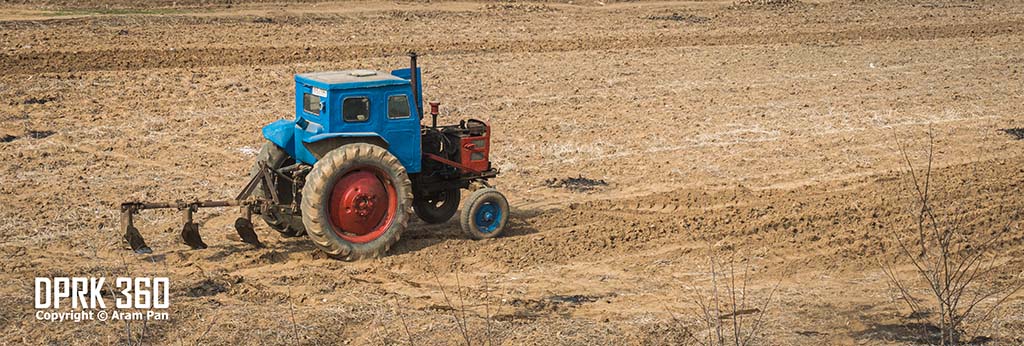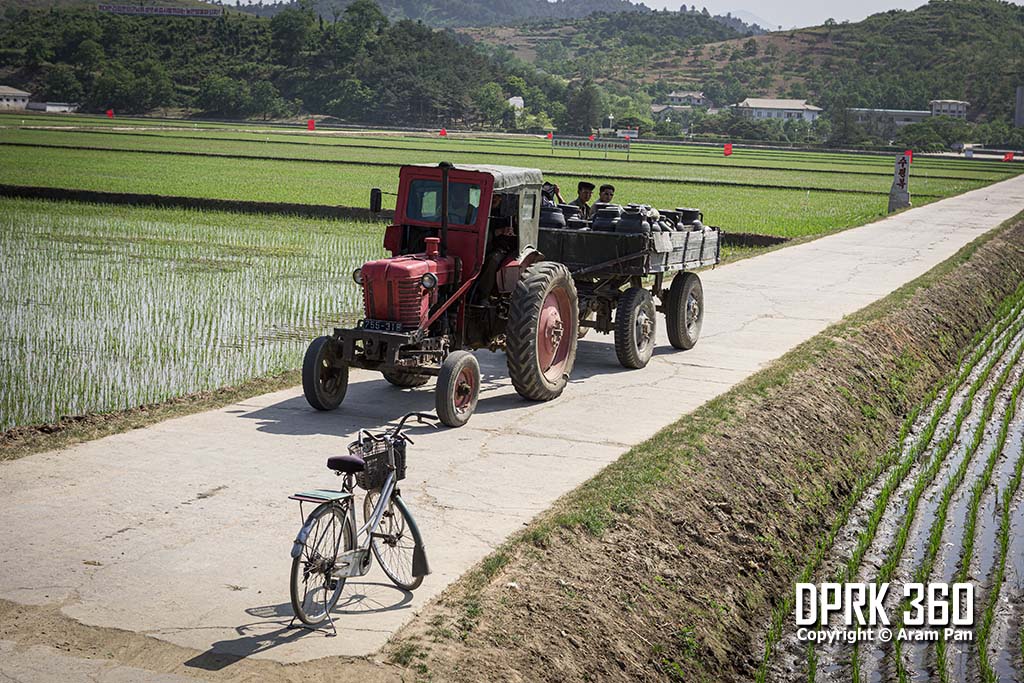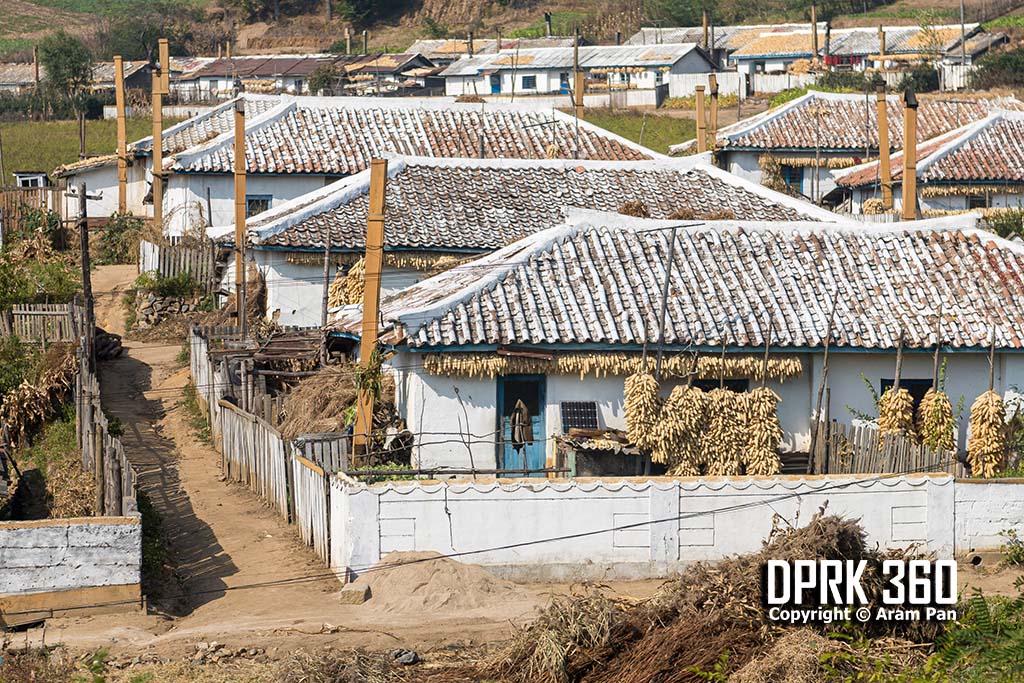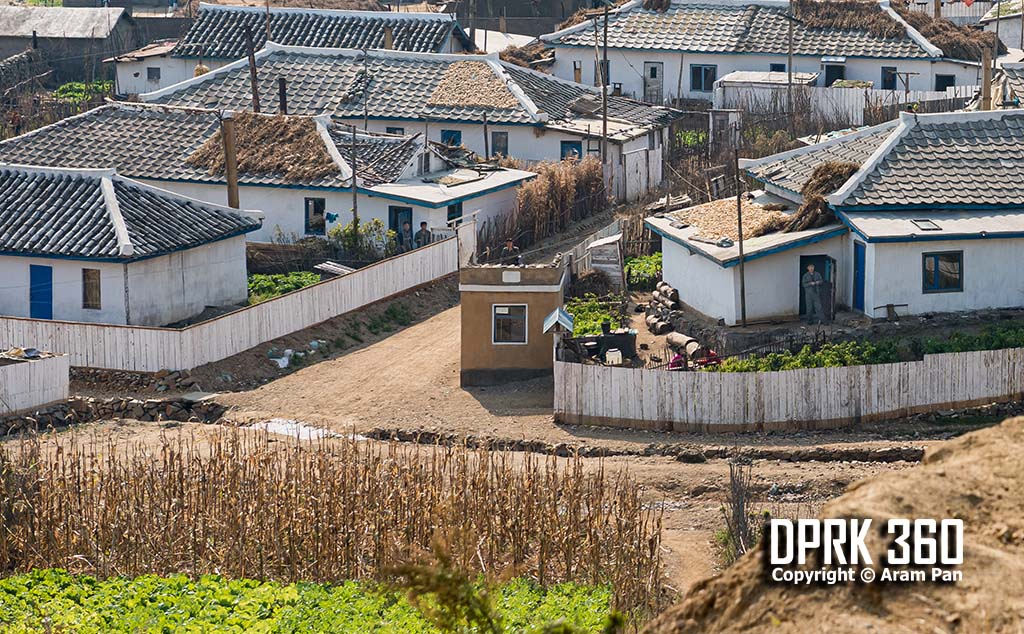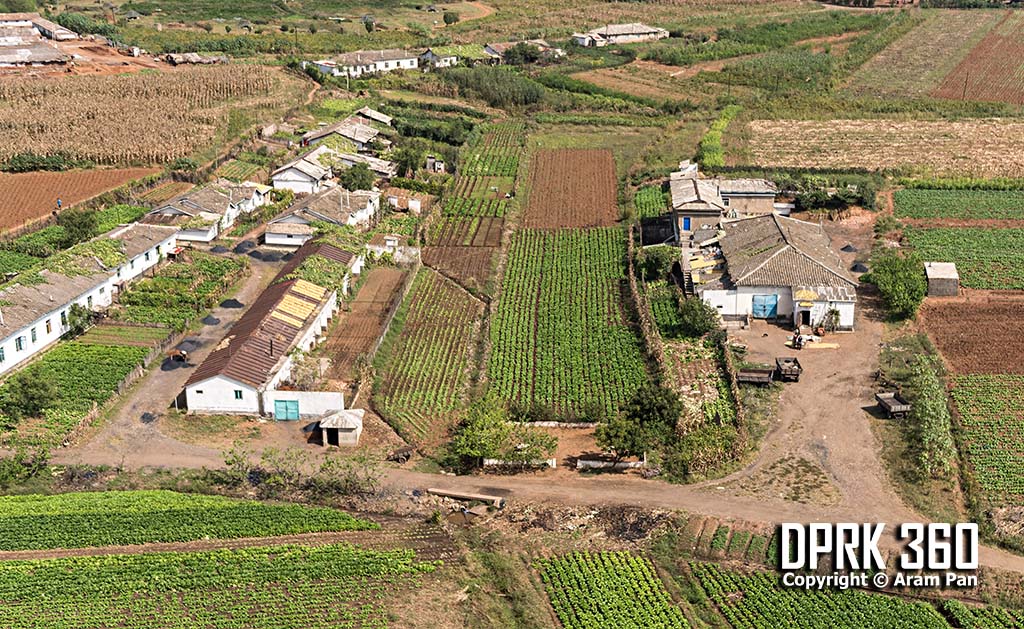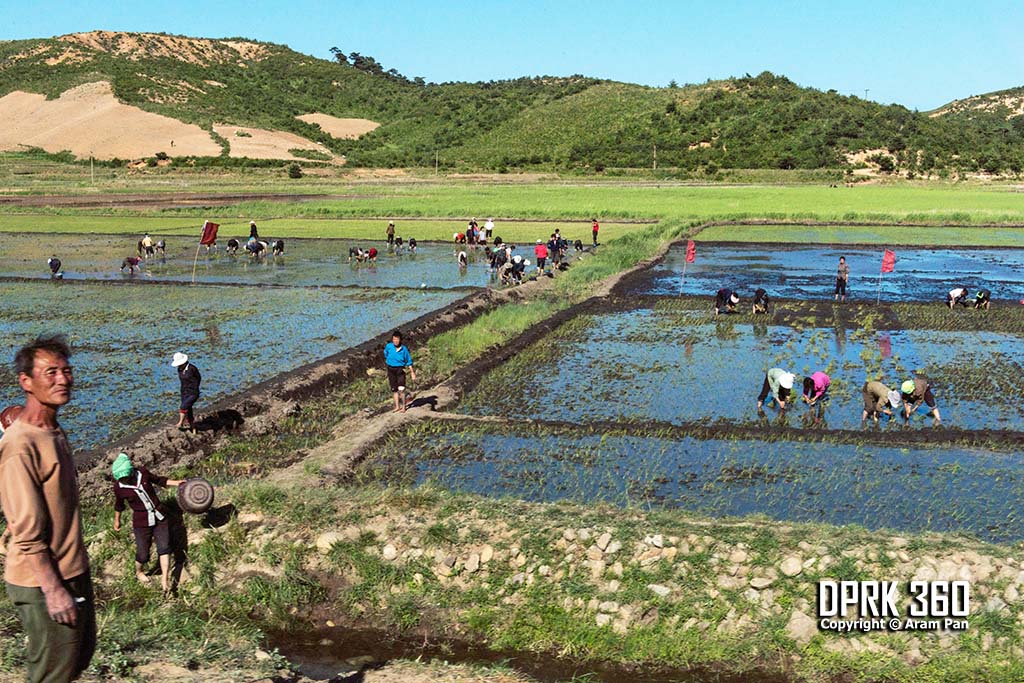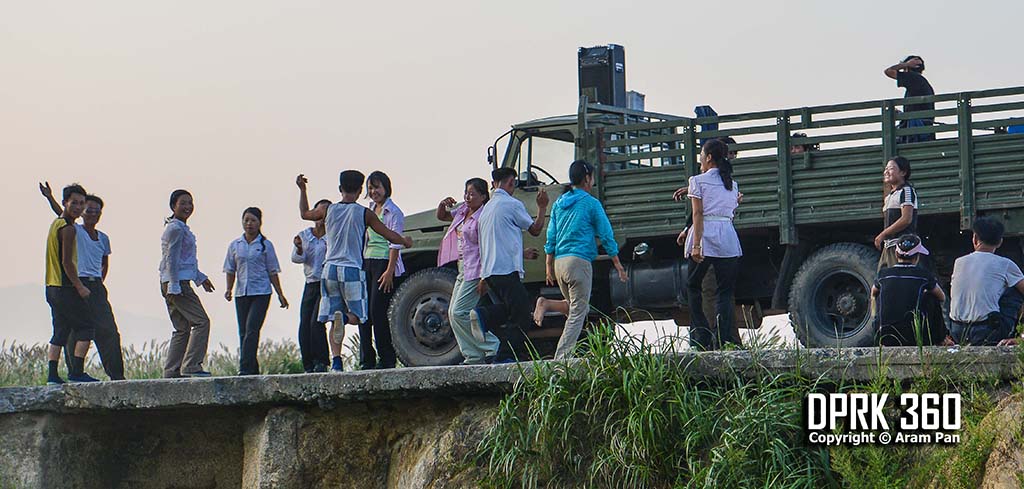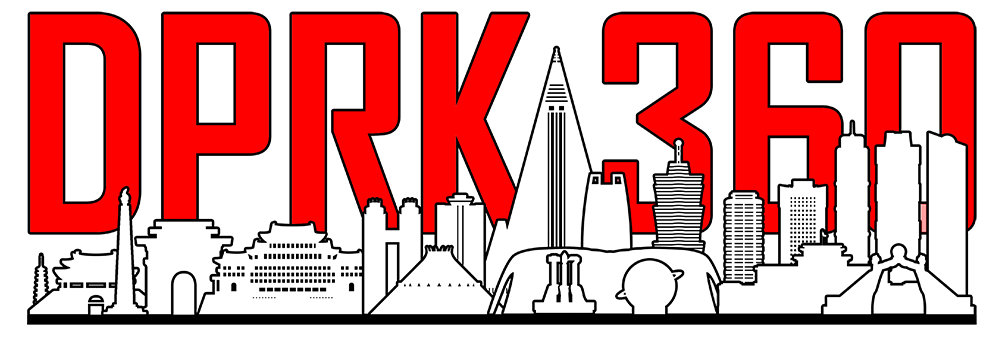Rural North Korea
The life of a North Korean outside of the cities and towns revolves primarily around agriculture. One of the biggest changes in recent years has been the allowance of farmers to decide for themselves what they want to grow; as long as state production requirements are met. The bulk of farms seen across North Korea focuses on rice, with smaller private plots set aside for vegetables. Nowadays, farmers check the demand and supply at their local markets and grow suitable crops that can be bartered or sold for profit.
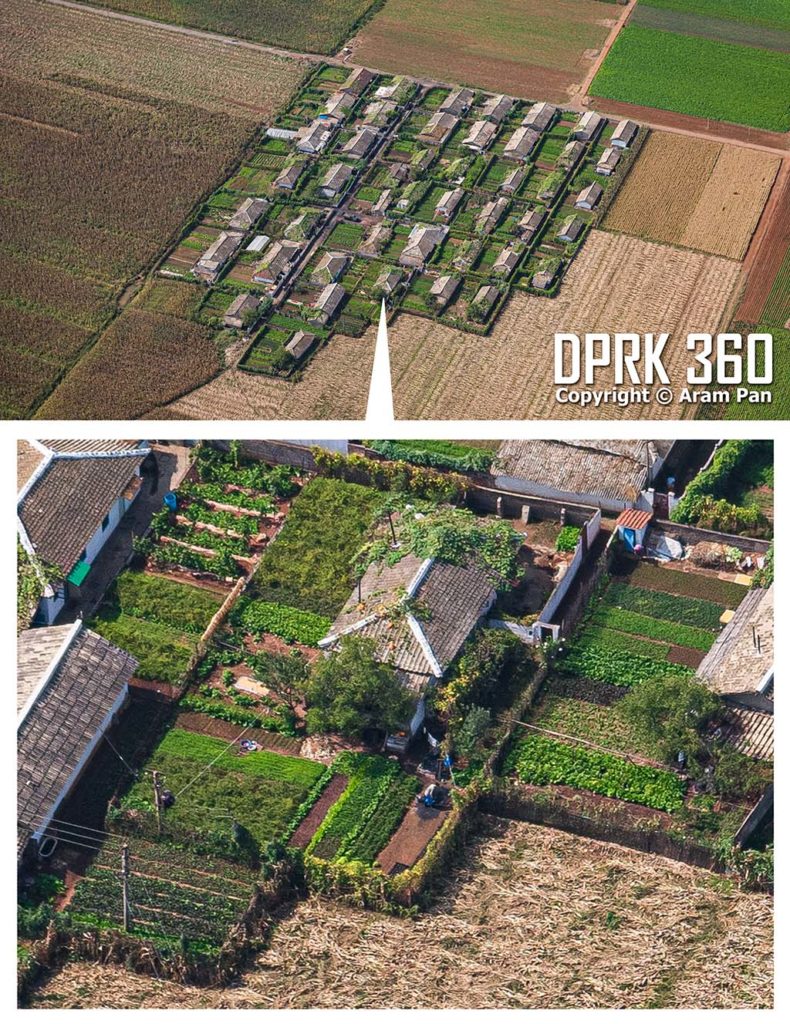
The Chongsanri cooperative farm is somewhere near Nampo. It’s known throughout the country as the ideal model of DPRK farming technique and is fully equipped with facilities like a school, housing, and a local shop. It’s one of the more popular model farms open to foreign visitors.
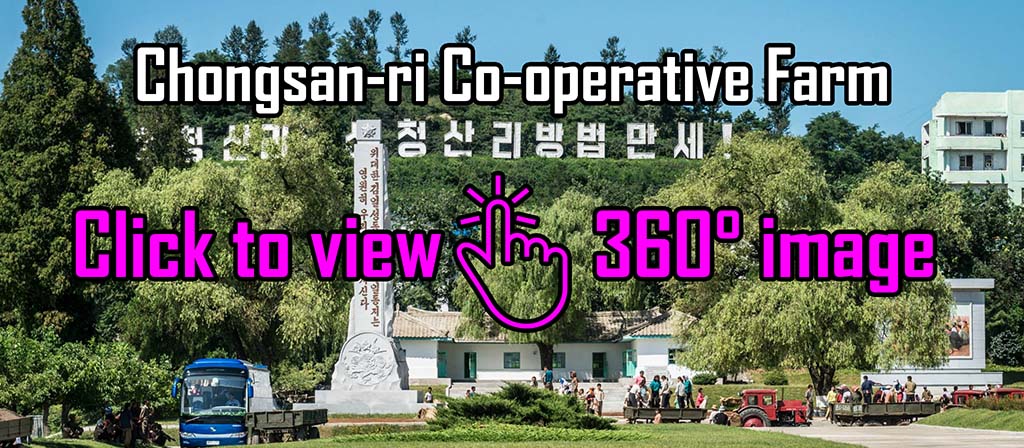
360도 사진 감상을 위해 클릭하세요.
Approximately 12 km (7.45 mi) south of Wonsan City, the Chonsam Co-operative Farm was created in 1953 through the joining of 3 adjacent villages in a cooperative work agreement. It comprises 500 hectares of which 300 are devoted to paddy fields for rice production.
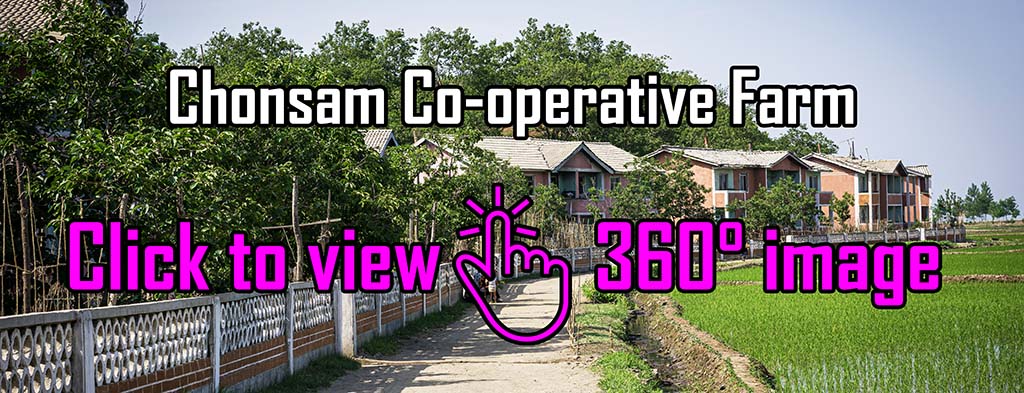
360도 사진 감상을 위해 클릭하세요.
While touring the Sariwon Migok Cooperative Farm, I was brought to see a typical farmer’s home. It’s a simple accommodation with a coal briquette heating system for the cold months. Methane for cooking is produced at the farm by fermenting human and animal waste, and vegetable scraps. North Korean farms are currently being upgraded to include such sustainable gas production.

360도 사진 감상을 위해 클릭하세요.
From planting to harvesting, everything is done by hand and it is a very labor-intensive process. Machinery is seldom used due to the high price of fuel so farmers still rely heavily on oxen to pull karts and plow the land.

During planting and harvest seasons, North Korean military personnel are deployed throughout the country to support farmers as manual labor. Soldiers and cadets alike are deployed by the hundreds of thousands and their sheer numbers make for light work.
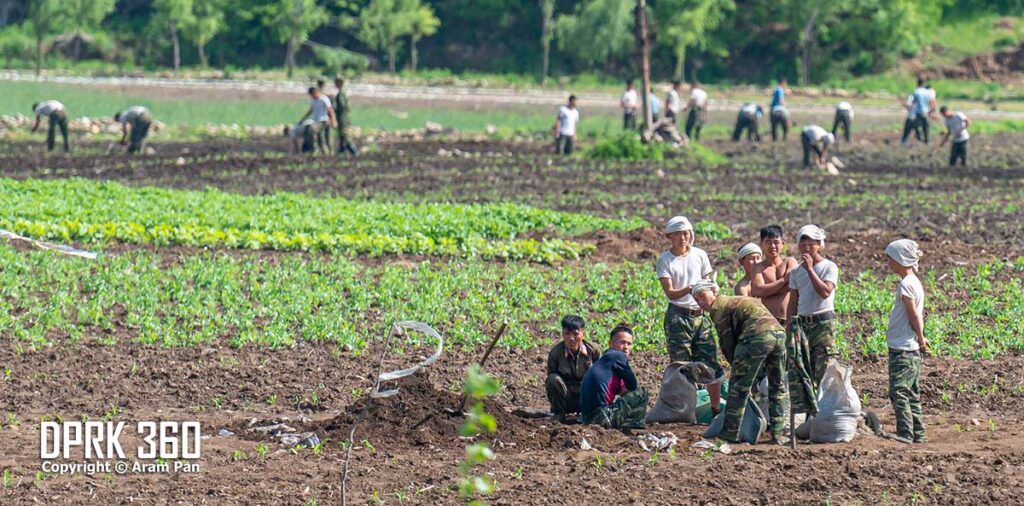


During the quiet months, farmers no longer need the large labor force so the soldiers are redeployed to construction work, or go back to military training. Farms are quiet and serene during most parts of the year. Check out the 360 image of the Sariwon Migok rice farm at sunset.
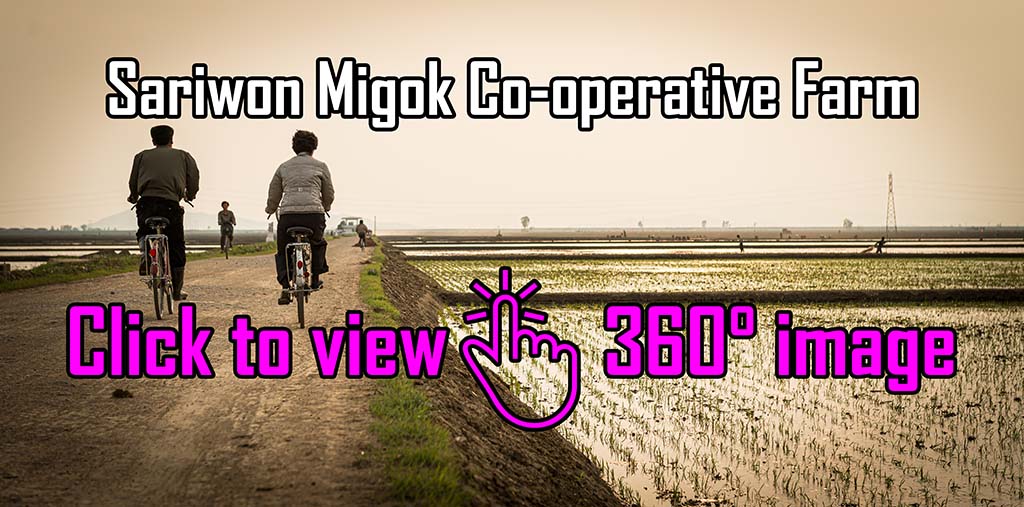
Scroll down to see more photos of rural life…
